Also known as golden or teddy bear hamsters, Syrian hamsters are among the most popular pets worldwide. These tiny rodents are belonging to the subfamily of hamster Cricetidae. Even though these hamsters are popular pets in the Western world, their number declines significantly in the wild. The researchers think that deliberate elimination and the loss of natural habitat due to agriculture are the main reasons behind this sharp decline of Syrian hamsters in the wild. However, the captive breeding program of the Syrian hamsters is well established compared to the other hamster.
Syrian hamsters are bigger compared to some hamster species, like the Chinese dwarf hamsters.
Breed Overview
- Scientific name: Mesocricetus auratus
- Length: 5 to 7 inches
- Weight: 4 to 7 Oz
- Colour: Can be found in various colours. There is a white band around the body which acts as a physical feature of the Syrian hamster.
- Lifespan: 3 to 4 years
- Temperament: Easy-going, curious, highly territorial, solitary animals.
Geographical Distribution
You can find these hamsters in the arid regions of Southern Turkey and Northern Syria. Even though you can find Syrian hamsters of many colours, you can mostly find hamsters of golden brown colour with a lighter belly in the wild.
Appearance
The adult hamsters tend to grow up to 15 centimetres in length, and the weight ranges from 100 gms to 150 gms. However, captive-bred Syrian hamsters can gain up to 175 to 225 grams of weight.
Like the other members of the Hamster family, the Syrian Hamsters also have expandable cheek pouches. The cheek pouches of the Syrian hamsters extend from their cheeks to their shoulders. While living in the wild, these hamsters use their cheek pouches to carry food to their burrows. The Arabic name of the Syrian hamsters also denotes the importance of their pouches. Thanks to the amount of storage space these hamsters have in their pouches, it translates into a mister saddlebag. If food is plentiful in the wild, the hamsters try their best to store food in large amounts to carry it back to their burrows.
Syrian hamsters mainly come with a band of white fur around their middle. These white bands go around their body like a bandage. You can also get Syrian hamsters with broken zigzags or narrow bands and some with none at all. These hamsters come in every possible colour, and sometimes you can find multi-coloured Syrian hamsters as well.
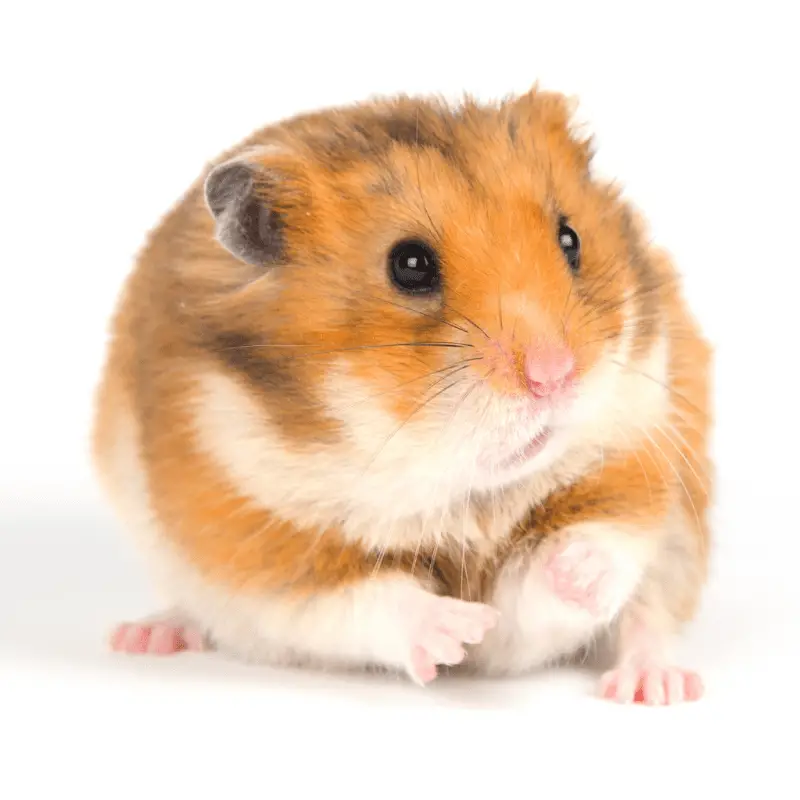
Colours
- Black
- Cinnamon
- Cream
- Dark Brown
- Golden
- Sable
- Silver Grey
- Tortoiseshell and Roan
- Tortoiseshell and White
- White
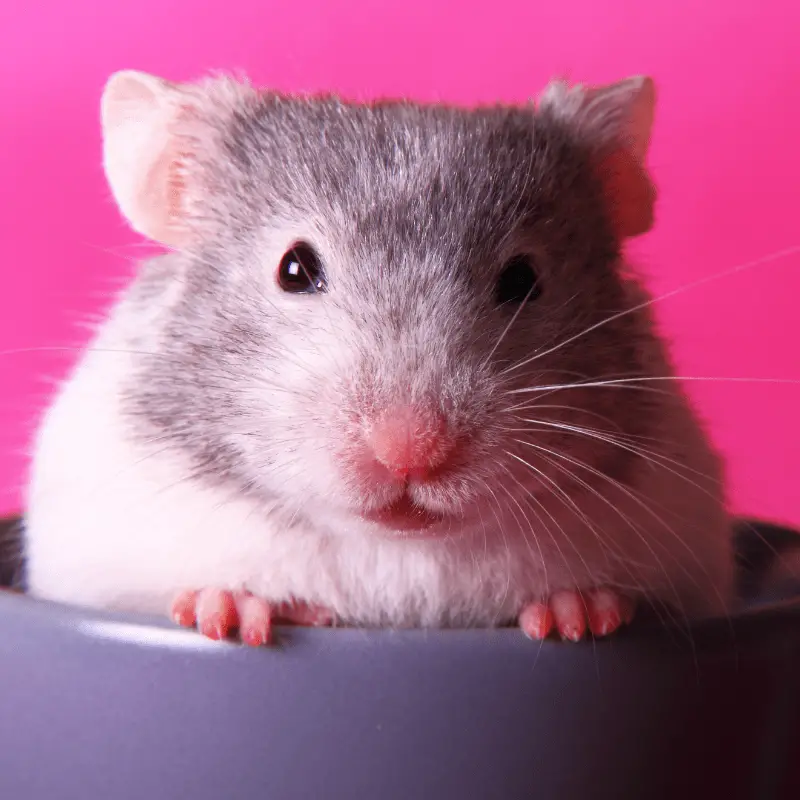
Grey/Silver and White 
White 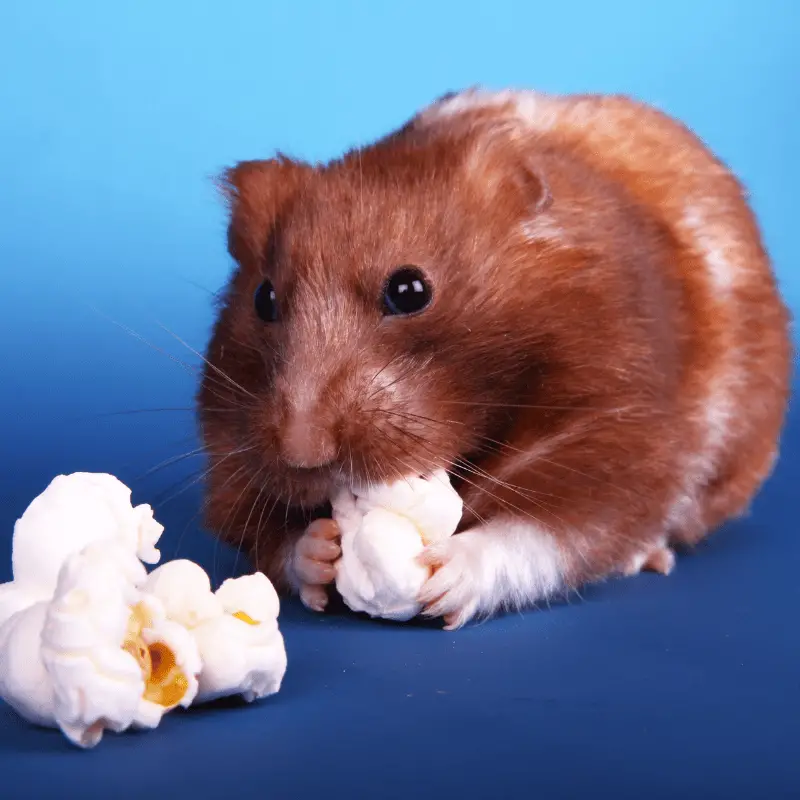
Brown
Behaviour and Temperament
Syrian hamsters share several behavioural traits with other breeds. These rodents are nocturnal creatures that like to spend most of their daytime sleeping. Syrian hamsters are very territorial animals. They do not tolerate the presence of other hamsters in their territory. Fighting against each other is quite common when it comes to Syrian hamsters. The only exception occurs when a male and female meet on neutral grounds within plenty of space or when the female is in heat. Even after mating, the female Syrian hamsters may attack a male.
Once the baby hamsters become adults, they can attack their siblings and kill them. In captivity, the baby hamsters should be separated from their mothers according to their gender after four weeks of age. You can keep the same-sex siblings at the same enclosure up until they are eight to ten weeks of age.
During this time, the hamsters start to get territorial and can even kill each other. Infanticide is not something uncommon among female hamsters. In captivity, the mother hamsters can kill and eat their babies if the baby hamsters come in touch with the humans. That is why it’s crucial not to handle baby hamsters under the age of four weeks. While nursing, hamsters treat any foreign scent as a threat and act violently upon it. In the wild, female hamsters feed on their dead babies as well.
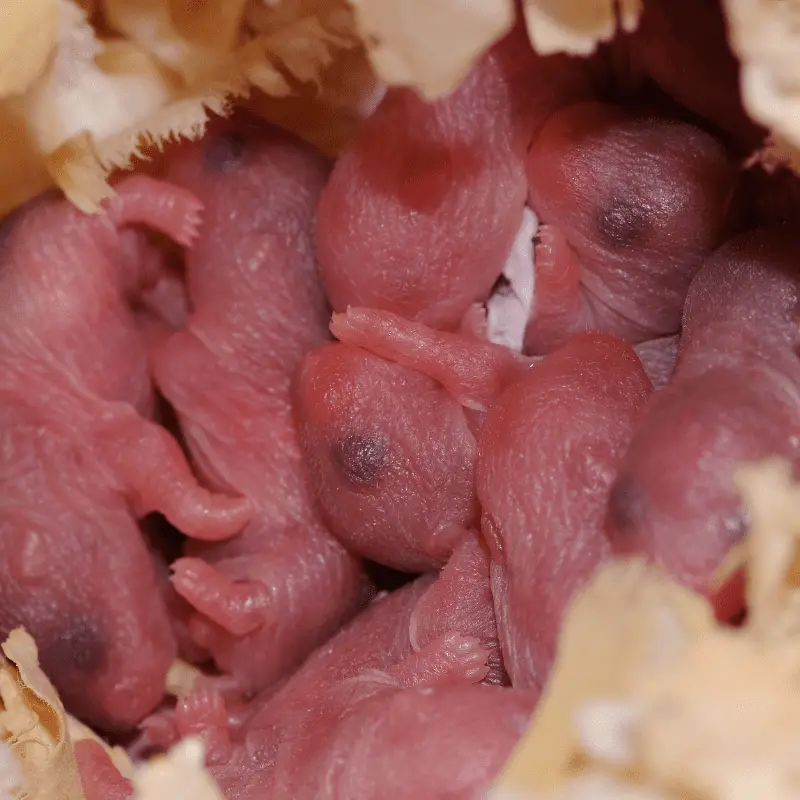
The golden hamsters mark their burrows with the help of the secretions from the scent glands located on the hips. These scent glands are known as flank glands. Male hamsters tend to lick their body parts near the glands, which creates a damp spot on their fur. Once that’s done, the hamsters drag their bodies along the side to mark their territories. Female hamsters also mark their territories with the help of their bodily secretions and faeces.
Mating and Reproduction
The hamsters have a concise reproductive cycle. Their gestation period is between 16-18 days. When they mature sexually, female hamsters come to heat every four days. Golden hamsters and other animals belonging to the Mesocricetus genus have the shortest gestation period among all different species.
The gestation period of Syrian hamsters can potentially last up to 21 days. However, it can result in complications if they go past 18 days. A female hamster can give birth to a litter of 20 or more baby Hamsters. However, the average litter size of the Syrian hamsters is about 6 to 12 babies.
The female Hamsters enter their heat almost immediately after giving birth. They can get pregnant even though they already have a litter. If the female hamster becomes a mother for the first time or feels threatened while nursing their babies, they can eat their babies or abandon them. Back-to-back pregnancy puts an enormous burden on the health of the mothers, which can lead to malnourished and weak babies.
History
As the name suggests, you can find Syrian hamsters in the wild of Syria. These hamsters were first described in the Second Edition of the natural history of Aleppo, which was the book written and edited by a couple of Scottish physicians living in Syria. The book was published in 1797. The Syrian hamster was first recognised as a separate species in 1839 by a British novelist named George Robert Waterhouse. Waterhouse used a female hamster as the original specimen and called it Cricetus auratus. The skin of the holotype specimen is still kept at the natural history Museum in London.
In 1930 Israel Aharoni, a Professor at the Hebrew University of Jerusalem, captured a female hamster with a litter of babies in Aleppo. He bred the hamster in Jerusalem as laboratory animals. Some of those hamsters escaped from the cage and moved outside the laboratory through a hole in the floor. It is believed that most of the Golden hamsters found in Jerusalem today are the descendants of that litter.
Some of the design descendants of these captured hamsters of Jerusalem were shipped to Britain in 1931. They were brought to the Wellcome Bureau of Scientific Research centre. These hamsters were bred in captivity, and then, two pairs of the descendants of these hamsters were presented to the zoological society of London in 1932. The descendants of these hamsters were handed over to the private breeders in 1937.
The hamsters came to the United States in 1971. However, the surprising thing is that none of the hamsters found in Northern America today is descendants of this lot. Genetic research has pointed out that all the domestic Syrian hamsters are descendants of a single female hamster. That is probably the female hamster that was caught in 1930 in Syria. Since the naming, the genus Cricetus was subdivided, and the genus Mesocricetus was created. From that, the scientific name of the Syrian hamsters was changed and accepted as Mesocricetus auratus.
Survival in the Wild
After Professor Aharoni collected the hamster in 1930, people reported only very frequent captures and sightings in the Syrian wild. Researchers carried out different expectations to confirm the lack of presence of Syrian hamsters in Southern Turkey and northern Syria. One in September 1997 and another in March 1999. During that time, the researchers were able to find and map 30 different burrows. None of those hamster burrows had more than one adult. The researchers also caught six females and seven males. Among those captured was one female pregnant hamster and later gave birth to 6 baby Hamsters. The researchers sent these 19 captured Syrian hamsters to the University of Aleppo in Germany to create a new breeding stock.
This expedition also changed the general idea about the behaviour of the hamsters. In captivity, the activity pattern of the Syrian hamsters is nocturnal. However, in the wild, their activity patterns are crepuscular. The researchers explain that the Syrian Hamsters showcase this behaviour pattern to avoid the night predators like owls. However, over time, owls have also changed their hunting activities, and right now, they tend to hunt at dawn and dusk. On rare occasions, researchers have noticed some owls hunting during the broad daylight. Another theory that supports the crepuscular activity level of the Syrian hamsters is related to their extreme sensitivity to temperature fluctuations. Researchers have pointed out that the Syrian hamsters In the wild may showcase crepuscular activity to avoid the extreme temperature fluctuations of day and night.
In captivity, Syrian hamsters can run about 2 to 5 miles a day. Not only that, in a lifetime, they can store up to one ton of food. One of the unique features of the Syrian hamsters is that they tend to separate their food from their nesting and urination area. Only very old hamsters, who have weak teeth, tend to break this rule. These hamsters tend to soak hard nuts and seeds in their urine to soften them. Hamsters are exceptional clean housekeepers and often sort through their food stock to eliminate the rotting and moulding food items.
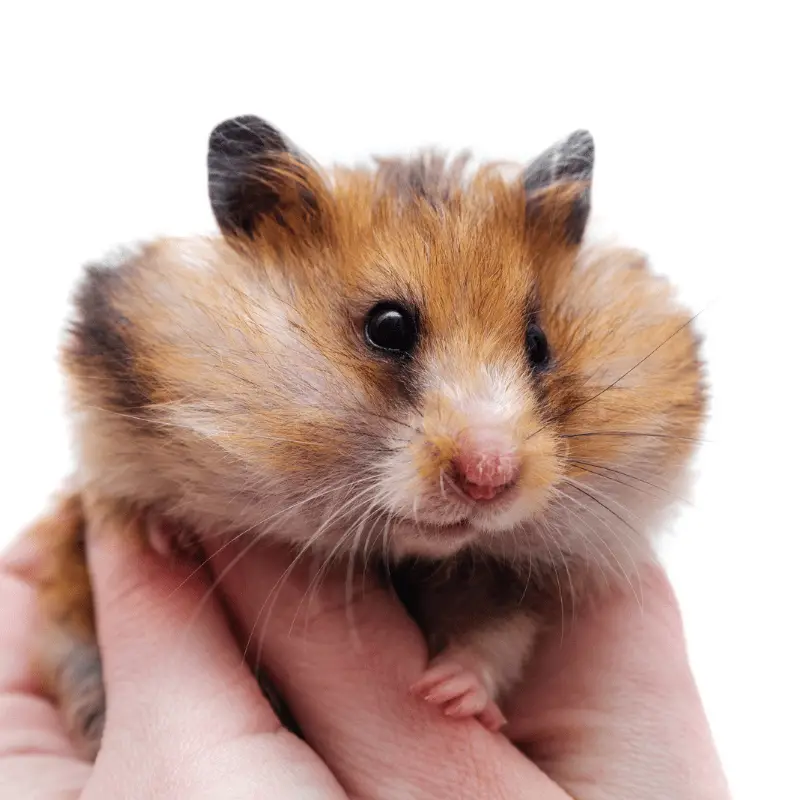
If a lot of food is available, the Syrian hamsters tend to stuff their cheek pouches so much that they cannot even close their mouths. They tend to collect the food from foraging in the wild and carry it to their nest using their cheek pouches. Even though most of these studies have been conducted on the captured hamsters, the findings shed interesting light on the animal’s natural behaviour when they live in the wild.
Syrian Hamsters As Pets
If you are thinking about getting a Syrian hamster for yourself, choosing a large enclosure for them is better. The bigger the cage is, the more space your hamster will get for exercise. The cage should at least be 2 feet by 3 feet in size. Make sure to choose an enclosure with a tightly fitting mesh. Instead of glass enclosures, you can also select wired cages for better airflow. However, these cages will have less protection against drafts. You must make sure they aren’t placed in any drafts as this is essential to avoid any unwanted and dangerous hibernation in hamsters.
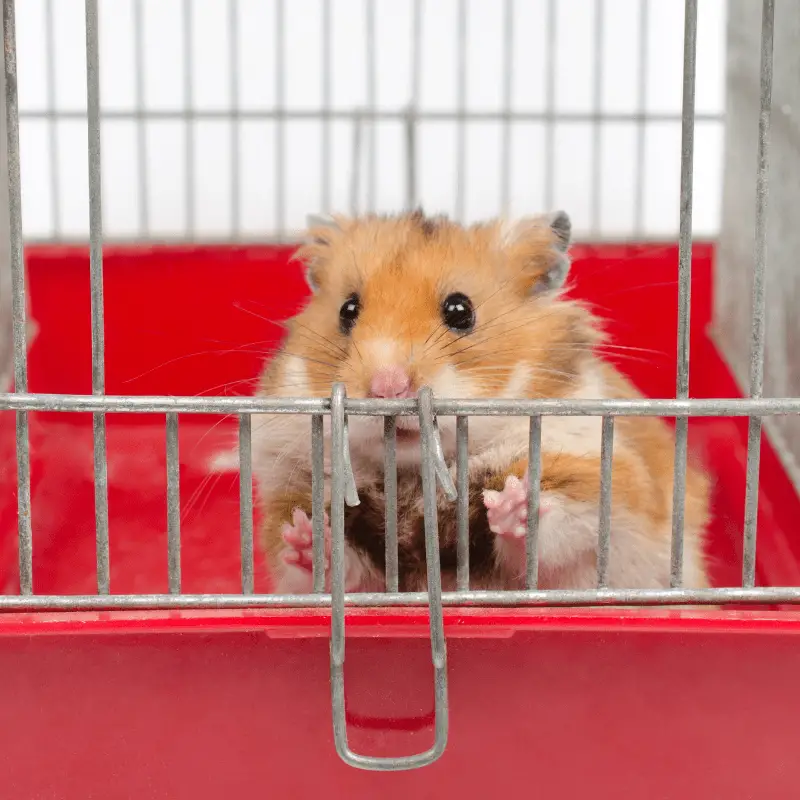
Keep a lot of hamster toys to keep your pet busy. It is always better to install an exercise wheel with a solid surface. It would help if you did not choose an exercise wheel with bars, leading to severe accidents and injuries. You can also create bridges and tunnels for climbing and hiding and keep a couple of wooden blocks to maintain the dental hygiene of your pet hamster. Also, have a sleeping house or a nest at the corner of the enclosure.
Syrian Hamster facts
Syrian Hamsters are considered ideal house pets as they are easy to care for and gentle. However, a hamster can be aggressive if they are scared or startled. They can also act grumpy if they are awakened while sleeping. As the hamsters are generally nocturnal, if you awake during the day, the chances of getting bitten increase significantly.
Syrian hamsters have very poor eyesight. They have a gland on their backside that secretes an identifying smell. This gland helps them to find their way around.
The teeth of a hamster keep on growing continuously. Without something to chew on, their teeth can grow so long that they can injure the lips and mouths of these animals. Chewing on twigs or wooden blocks helps to keep the teeth short in size.
Mother hamsters can be very protective of their babies. If mother hamsters fears for the safety of the babies, they will try to put their babies inside the cheek pouch and carry them to safety.

